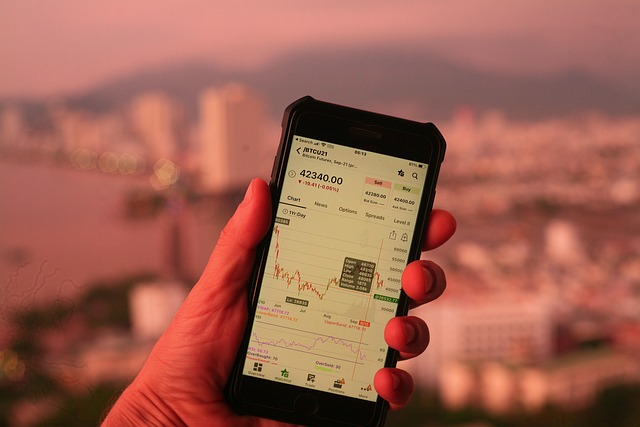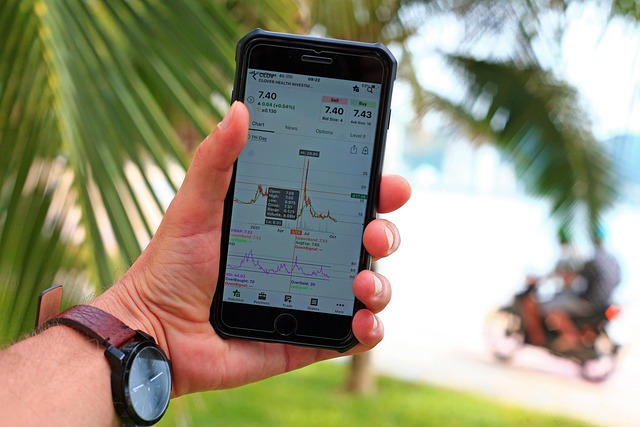Is Amana Trading App Safe? Security, Risks, and How to Verify
Author: Jameson Richman Expert
Published On: 2025-10-28
Prepared by Jameson Richman and our team of experts with over a decade of experience in cryptocurrency and digital asset analysis. Learn more about us.
Is Amana trading app safe is a common question among traders and investors considering a new mobile or web-based platform. This article examines Amana’s security posture, regulatory standing, user experience, privacy practices, and real-world indicators to help you evaluate safety. You’ll also find practical steps to verify any trading app, recommended security practices, and trusted resources and links to deepen your research.

Quick summary: What this article covers
- How to assess an app’s legitimacy and security (technical and regulatory checks).
- Key safety features to expect in a reputable trading app.
- How to interpret user reviews and red flags that indicate scams.
- Actionable steps to test and minimize risk when using Amana or similar apps.
- Useful resources, audits, and educational links to learn more about trading safety and strategy.
Why users ask “is Amana trading app safe?”
With countless trading apps and crypto platforms emerging every year, investors are rightly cautious. High-profile hacks, phishing scams, and unlicensed broker cases have made users ask for clear safety signals before depositing funds. Questions revolve around these areas:
- Regulation and licensing — Is the platform legally authorized in my jurisdiction?
- Security measures — Does it use proper encryption, authentication, and custody practices?
- Transparency — Are fees, terms, and ownership clearly disclosed?
- Reputation — What do independent reviews and community feedback say?
Core criteria to determine if a trading app is safe
Any credible assessment of the Amana trading app (or any trading app) should check the following criteria:
- Regulatory registration and licensing — Trading platforms should provide verifiable license numbers and regulator contact info (e.g., FCA in the UK, SEC/FINRA resources in the U.S., or equivalent). You can verify licenses directly using regulator databases such as the U.S. Securities and Exchange Commission (SEC) or the Financial Conduct Authority (FCA). See the SEC information center for investor protection: SEC official site.
- Encryption and transport security — The app and website should use HTTPS/TLS and modern cipher suites. Look for valid SSL certificates and HSTS policies.
- Authentication and account security — Strong password policies, mandatory two-factor authentication (2FA) using an authentication app (e.g., Google Authenticator), and biometric options on mobile improve safety. Read about two-factor authentication on Wikipedia for context: Two-factor authentication.
- Asset custody and withdrawals — Does the platform custody funds centrally, or does it integrate with third-party custodians? Check withdrawal policies, withdrawal limits, and speed.
- Transparency and corporate info — Publicly listed owners, an accessible corporate address, and identifiable leadership are positive signals. Anonymous or opaque ownership is a red flag.
- Independent audits and code reviews — For crypto apps, third-party smart contract audits (if applicable) and financial audits add credibility.
- Customer support and dispute resolution — Responsive, multi-channel support (chat, email, phone) and clear dispute policies are important.
- Data privacy policy — A clear privacy policy that complies with GDPR/CCPA and explains data usage is expected.

How to verify Amana’s credentials step-by-step
Use this checklist to evaluate the Amana app specifically. You can apply the same steps to other trading platforms.
- Check the app store listing and developer — Inspect the developer name on Google Play or Apple App Store. Does the publisher match the company listed on the website? Check when the app was first published and read recent reviews for fraud reports.
- Verify the website domain — Use WHOIS lookup (e.g., ICANN WHOIS) to check domain age and registrant details. New domains or privacy-protected registrations require extra caution.
- Confirm regulator registrations — If Amana claims to be regulated, copy any license number and verify it on the regulator’s public database (FCA, SEC, ASIC, etc.). Regulatory websites provide authoritative confirmation.
- Inspect security headers and SSL — Tools like SSL Labs (Qualys) can test TLS configuration. Look for up-to-date TLS versions and no critical vulnerabilities.
- Review privacy and terms — Read Amana’s privacy policy and terms of service. Look for how they store private keys, whether they use cold storage, and how they handle KYC/AML data.
- Test customer support — Contact support with a non-sensitive question and evaluate responsiveness and professionalism.
- Search for independent reviews and news — Look for coverage by trusted media or security blogs. Also check community platforms (Reddit, BitcoinTalk) but evaluate comments critically.
- Do a small deposit test — If everything looks legitimate, deposit a minimal amount and attempt a withdrawal to confirm real access to your funds.
Common red flags that indicate potential danger
- Unverifiable or missing license details.
- Excessively aggressive promises of guaranteed returns or unrealistic profits.
- Poorly written website, broken links, and inconsistent contact information.
- Anonymous owners with no corporate registration.
- Forced deposits or blocked withdrawals without transparent rationale.
- Paid-for “reviews” without any critical analysis or independent verification.
Technical security features you should expect in a safe trading app
A reputable app will implement multiple layers of protection:
- End-to-end encryption for account communications and API traffic.
- Strong TLS (HTTPS) with up-to-date certificates and HSTS enabled.
- Multi-factor authentication — not SMS only. Prefer TOTP authenticator apps or hardware security keys (U2F/WebAuthn).
- Role-based access controls — granular permissions for API keys, sub-accounts, and withdrawal whitelists.
- Cold storage for custodial platforms and transparent cold/hot wallet segregation for crypto custody.
- Regular security audits published on the website (penetration testing reports, smart contract audits for DeFi).

Privacy and data handling — what to look for
Privacy is central to safety. Check if Amana:
- Specifies what personal data it collects and why.
- Explains retention periods and deletion procedures.
- Provides a clear cookie and tracking policy.
- Shares whether it sells user data or shares with affiliates.
- Complies with major privacy frameworks (GDPR for EU users, CCPA for California residents).
How user reviews and community signals factor in
User reviews are helpful but need contextual analysis. Look at:
- Volume and timing — a sudden flood of 5-star reviews might be fake.
- Common complaint themes — withdrawal issues, poor customer support, or unexplained freezes.
- App update notes — active development and patching of bugs indicates ongoing maintenance.
- Independent community threads — Reddit and specialized forums can reveal long-form user experiences.
Practical example: Step-by-step safety test for Amana
Here’s a practical workflow you can follow to evaluate Amana or any trading app in real time:
- Open the Amana website and look for an “About” or “Legal” page. Save screenshots of license claims or corporate addresses.
- Use WHOIS to check the domain registration date and registrant (privacy registrations require more scrutiny).
- Run an SSL test (e.g., SSL Labs) and check for TLS 1.2+ support.
- Search regulator databases for the company name and license numbers.
- Download the app from the official store and confirm the developer name matches the website.
- Contact customer support with a question about withdrawals, then note response time and clarity.
- If the platform looks credible, register, enable 2FA, deposit a minimal amount, and test a withdrawal to a known address.

Risk mitigation tips if you decide to use Amana
Even reputable platforms can have operational risks. Minimize exposure with these practices:
- Use strong, unique passwords and a password manager.
- Enable 2FA using an authenticator app or hardware key (avoid SMS 2FA where possible).
- Keep only active trading funds on the platform; store long-term holdings in a hardware wallet.
- Use withdrawal whitelists and set daily withdrawal limits if available.
- Monitor account activity and enable email/SMS alerts for logins and withdrawals.
- Keep your device OS and app up to date; avoid using rooted/jailbroken devices for finance apps.
Real-world signals: audits, press coverage, and third-party reports
Look for:
- Published security audits from well-known firms (e.g., ConsenSys Diligence, CertiK) — if Amana has crypto custody or DeFi features, audits are crucial.
- Independent press coverage in financial media or cybersecurity blogs.
- Regulator warnings listed publicly (if applicable).
When “not safe” is the likely conclusion
If multiple red flags exist — unverifiable licenses, blocked withdrawals, opaque ownership, and aggressive marketing promising guaranteed returns — it’s safer to assume the app is untrustworthy. Financial regulators often warn against platforms exhibiting such characteristics. Check regulator alerts; for example, the U.S. Securities and Exchange Commission (SEC) and national consumer protection agencies publish investor advisories about risky platforms. See investor protection resources at the SEC: Investor.gov.

Education and further reading (trusted resources)
Before committing funds to any platform, deepen your knowledge with courses and authoritative guides. A few useful learning resources include:
- An effective finance and trading education can help you avoid high-risk offers — consider structured programs that teach risk management and strategy: Effective Finance Trading Programme — Strategies for Maximum Profitability and Longevity.
- To learn how to evaluate signals and apps, read guides on choosing crypto signal apps: Best Crypto Trading Signals App — Top Picks & How to Choose.
- Improving technical chart skills can help you avoid depending on dubious automated promises — e.g., learn to use live charts and TradingView: Master Binance Live Chart & TradingView.
- If you trade BTC pairs, look for daily signals and analysis examples to check consistency: BTCUSD Signal Today 2025 Guide.
- Start with foundational books — free PDFs and guides can help: Where to Find a Crypto Trading Book PDF — Free Download & How to Use It.
Alternatives: Established exchanges and platforms
If you’re uncertain about Amana and want to use proven alternatives, consider major regulated exchanges with transparent practices and robust security. Examples (with official registration/referral links) include:
- Binance (global platform with wide liquidity): Register at Binance.
- MEXC (spot and derivatives): Register at MEXC.
- Bitget (copy trading and derivatives): Register at Bitget.
- Bybit (derivatives and spot trading): Register at Bybit.
Note: While these platforms are large and mature, they are not risk-free. Apply the same security and operational checks listed earlier.
Frequently asked questions (FAQ)
Can a trading app be “completely safe”?
No. No trading app is completely risk-free. Even highly reputable exchanges can suffer hacks, operational outages, or regulatory actions. The goal is to reduce risk by choosing platforms with strong security, clear regulation, good audits, and responsible corporate governance.
What if Amana asks for private keys or seeds?
Never share private keys or seed phrases with any service. Legitimate custodial platforms will never ask for your private key outside of user-controlled wallet setups. If asked for a seed or private key, treat it as a major red flag and stop all interaction immediately.
How important are audits?
Audits are very important, especially for crypto products that involve smart contracts. An audit doesn’t guarantee perfection, but a reputable third-party audit shows the provider takes security seriously and is willing to be transparently evaluated.
Where can I report suspicious activity?
Report fraudulent or suspicious trading apps to your local consumer protection agency and financial regulator. In the U.S., you can report fraud to the SEC or the Federal Trade Commission (FTC). For UK residents, contact the Financial Conduct Authority (FCA). For educational guidance, the Financial Consumer Agency pages of governments provide instructions on complaints.

Final verdict: Is Amana trading app safe?
Whether Amana trading app is safe depends on verifiable evidence across the categories outlined above. Without independent confirmation of licensing, audits, transparent ownership, and demonstrable user trust signals, it’s prudent to remain cautious. If Amana passes the checks (verifiable licenses, robust security audits, active customer support, consistent withdrawal performance), it may be appropriate for risk-tolerant traders to use — with conservative money management practices and small test deposits first.
Next steps — a practical to-do list
- Visit Amana’s official website. Collect screenshots of legal disclosures and save the domain for future reference.
- Verify any license on the regulator’s website and check for enforcement actions.
- Run technical checks for SSL and app store developer consistency.
- Contact support and evaluate responsiveness.
- If you proceed, enable full security settings, deposit a small test amount, and withdraw to confirm custodian transparency.
- Educate yourself using curated resources above and reputable trading guides before scaling up.
Staying informed, methodical, and skeptical is the best defense in an industry where innovation and risk go hand in hand. Use the resources and steps in this article to make a data-driven decision about whether the Amana trading app fits your safety and risk profile.
Useful further reading: authoritative cybersecurity basics on mobile security at Wikipedia: Mobile security, and investor resources at Investor.gov for additional regulatory guidance.